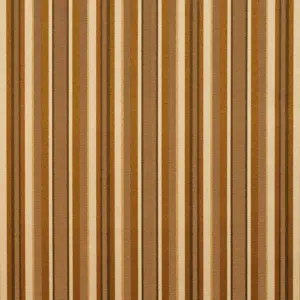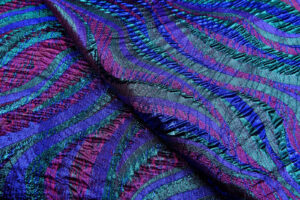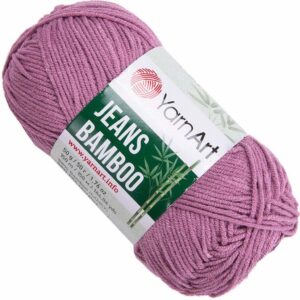How Does Cotton React with Muslin? Understanding Fabric Compatibility
Fabric compatibility is crucial in fashion and sewing, as it influences the quality and longevity of garments. Cotton and muslin, both popular choices in the textile world, often come up in discussions about fabric pairing. In this article, you’ll learn about their compatibility, benefits of mixing them, potential challenges, and tips for sewing and care.
Compatibility Analysis
Yes, cotton and muslin are compatible fabrics that work well together. Both are natural fibers, primarily made from cotton, which means they share similar characteristics that make them easy to combine. Here’s why they are a great match:
- Texture and Weight: Both cotton and muslin are lightweight, though muslin is typically even lighter. This makes them suitable for layering without adding bulk.
- Stretch: Neither fabric has much natural stretch, which means they behave similarly when sewn together, minimizing issues like seam puckering.
- Care Requirements: Both fabrics can usually be machine washed and ironed, simplifying maintenance.
- Durability: Cotton provides strength, while muslin adds a soft touch, making the combination both durable and comfortable.
Fabric Properties Comparison Table
| Property | Cotton | Muslin |
|---|---|---|
| Fiber Content | Natural (cotton) | Natural (cotton) |
| Weight and Thickness | Medium | Light |
| Breathability | High | High |
| Stretch and Elasticity | Low | Low |
| Wrinkle Resistance | Moderate | Low |
| Care Instructions | Machine wash, iron | Machine wash, iron |
| Durability | High | Moderate |
Benefits of Mixing These Fabrics
Combining cotton and muslin offers several advantages:
- Enhanced Texture and Visual Interest: The slightly different textures can create a subtle contrast, adding depth to garments.
- Improved Comfort and Performance: Muslin’s softness complements cotton’s sturdiness, resulting in comfortable and durable clothing.
- Better Drape and Movement: Muslin’s lightweight nature enhances the drape of cotton, allowing for fluid movement.
- Cost-Effectiveness: Both fabrics are affordable, making them a budget-friendly option for designers.
- Seasonal Versatility: The breathable nature of both fabrics makes them suitable for various climates.
- Design Possibilities: The combination opens up a range of design opportunities, from casual wear to home decor.
Potential Challenges
While cotton and muslin are generally compatible, there are a few challenges to consider:
- Different Shrinkage Rates: Pre-wash both fabrics to prevent uneven shrinkage.
- Conflicting Care Requirements: Ensure both fabrics can handle similar washing and drying conditions.
- Texture Clash or Pilling: Use interfacing to stabilize areas prone to wear.
- Seam Puckering: Use a walking foot or adjust tension settings on your sewing machine.
- Color Bleeding or Fading: Test for colorfastness before washing together.
Sewing & Styling Tips
- Sewing Techniques: Use a universal needle size 80/12 for best results.
- Needle and Thread Recommendations: Opt for a cotton or polyester thread to match fabric strength.
- Interfacing and Stabilizer Needs: Consider lightweight interfacing for added structure.
- Seam Finishing Methods: French seams or serging work well for a clean finish.
- Pattern Selection Advice: Choose patterns that benefit from lightweight, breathable fabrics.
- Styling Ideas: Layer muslin over cotton for a textured look, or use muslin for lining in home decor projects.
Care & Maintenance Guide
- Washing Instructions: Machine wash in cold water to prevent shrinkage.
- Drying Recommendations: Tumble dry on low or air dry to maintain fabric integrity.
- Ironing and Steaming Tips: Use a medium heat setting and steam to remove wrinkles.
- Stain Removal: Treat stains promptly with a gentle detergent.
- Long-term Care: Store in a cool, dry place to prevent mildew and fading.
FAQ Section
-
Can you wash cotton and muslin together?
Yes, but ensure both fabrics are colorfast and pre-washed to prevent shrinkage. -
Will cotton shrink more than muslin?
Cotton may shrink slightly more, so pre-washing is recommended. -
What needle size should I use for sewing cotton and muslin together?
A universal needle size 80/12 is ideal for these fabrics. -
Can you mix cotton and muslin in one garment?
Absolutely, they complement each other well in terms of texture and weight. -
How do you prevent seam puckering when combining these fabrics?
Use a walking foot and adjust the tension settings on your sewing machine. -
Is it okay to mix cotton and muslin for upholstery?
While possible, consider reinforcing muslin as it is less durable than cotton. -
What’s the best way to finish seams with these fabrics?
French seams or serging provide a neat finish and prevent fraying.
By understanding the compatibility and benefits of mixing cotton with muslin, you can create beautiful, functional garments and home decor items. With the right techniques and care, these fabrics can enhance your sewing projects and bring your creative visions to life.



Leave a Reply